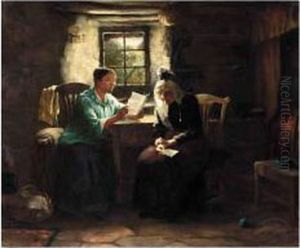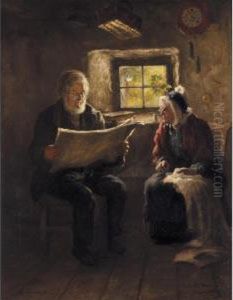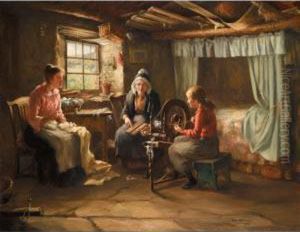Theophile Thomas Paintings
Théophile Thomas was a French artist born in 1847 in Lyon, France, and he passed away in 1916. Throughout his life, Thomas developed a unique style that contributed significantly to the art movements of his time, particularly within the realms of painting and drawing. His work, though not as widely recognized as some of his contemporaries, played an important role in the development of late 19th and early 20th-century French art.
Thomas's early life was marked by an immersion in the rich cultural and artistic heritage of Lyon, a city known for its vibrant silk industry and a strong tradition in the fine arts. This environment undoubtedly influenced his artistic direction. He pursued his education in the arts at the École des Beaux-Arts in Lyon before moving to Paris, where he furthered his studies and began to establish himself as an artist.
In Paris, Théophile Thomas was exposed to a variety of artistic movements, including Impressionism and Post-Impressionism, which were dominant forces in the art world at the time. However, Thomas carved out his own niche, blending traditional techniques with emerging styles. His work often reflected an interest in everyday life, capturing scenes of Parisian society with a keen eye for detail and a sensitive use of color. His paintings and drawings exhibited a fascination with light and shadow, employing these elements to create mood and atmosphere.
Thomas participated in several important exhibitions throughout his career, though he often remained on the periphery of the major art movements of his time. His commitment to his personal vision and technique, rather than aligning closely with any single movement, may have contributed to this. Despite this, his work was well received by critics and the public alike, and he was known among his peers for his dedication to his craft.
After his death in 1916, Théophile Thomas's contributions to French art were somewhat overshadowed by the more prominent figures of his era. However, in recent years, there has been a renewed interest in his work, with art historians and collectors recognizing the subtle nuances and depth of his artistic exploration. Thomas's legacy is that of an artist who remained true to his vision, capturing the spirit of his time with both grace and authenticity. His paintings and drawings continue to be appreciated for their beauty and historical value, offering insights into the cultural and social dynamics of late 19th and early 20th-century France.


